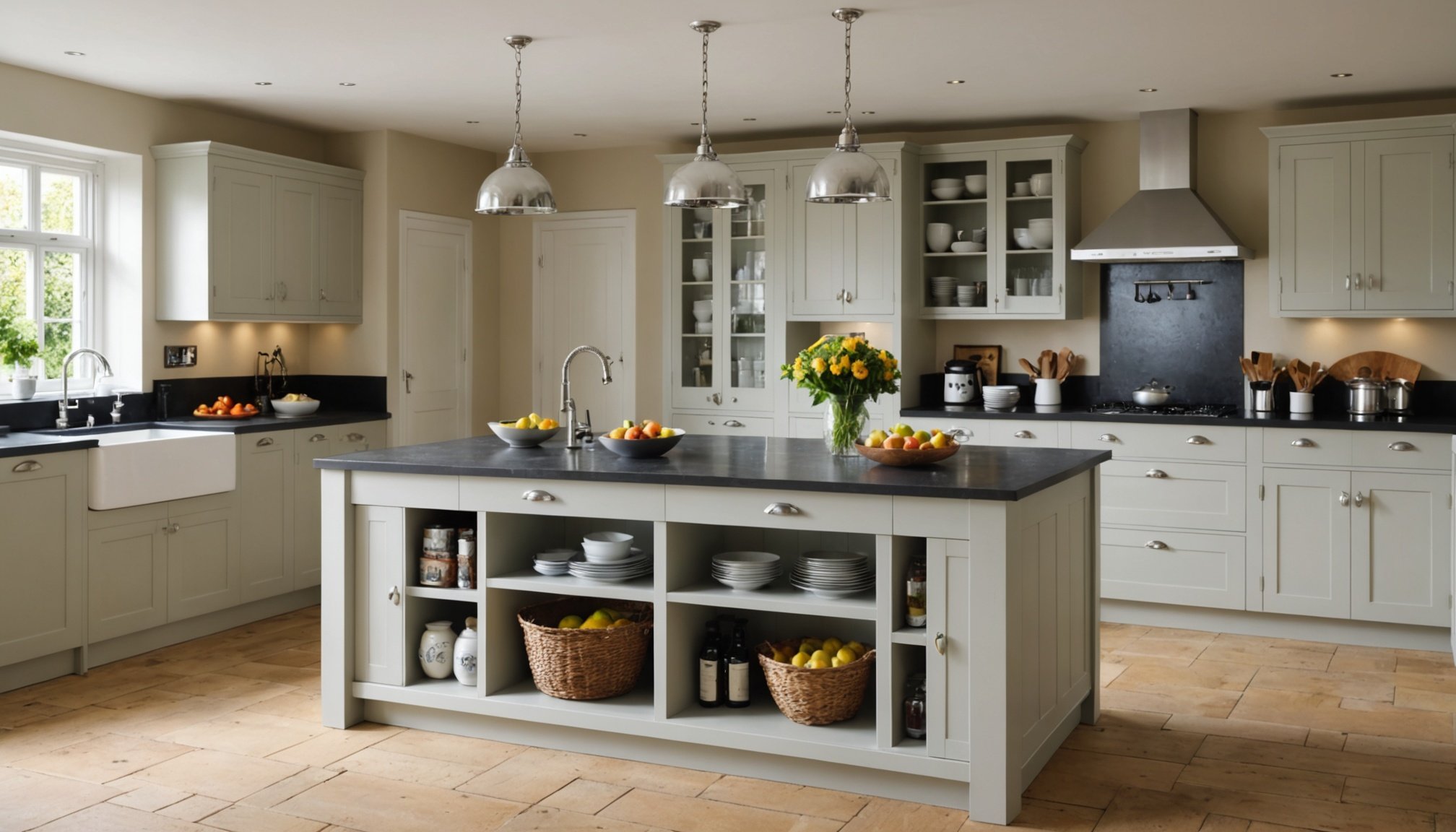In the heart of every home lies the kitchen, a space where culinary magic unfolds and family memories are crafted. However, in the UK, where domestic spaces often lean towards the compact, maximizing every inch becomes essential. One design feature that has surged in popularity is the kitchen island. A versatile element, it promises not only elegance but also functionality. Yet, for those of you residing in smaller homes, the challenge lies in ensuring that an island adds more value than it subtracts from your precious space. This article delves into the critical considerations for integrating a kitchen island into small UK kitchens, ensuring you balance aesthetics, practicality, and spatial harmony.
Maximizing Space in Small Kitchens
When considering a kitchen island, the primary concern is often the available space. In compact UK kitchens, every inch counts, and it’s vital to evaluate whether an island would complement or crowd the area.
This might interest you : What are the best ways to showcase my cookbooks in a stylish UK kitchen?
Spatial Evaluation
Evaluate the overall layout. Consider the existing cabinetry, appliances, and the room’s flow. A simple yet effective exercise involves marking out the island’s dimensions on the floor using tape. This visual aid can help determine if the addition is viable without a significant compromise on movement.
Optimal Size and Placement
A well-sized island in a small kitchen typically ranges between 2 to 3 feet wide and up to 5 feet long. It’s crucial to ensure at least 36 inches of clearance around all sides. This space allows you to navigate comfortably, enhancing both safety and efficiency.
Topic to read : What maintenance tips should I follow for stainless steel appliances in my UK kitchen?
Clever Design Choices
Opt for slim designs that offer functionality without dominating the room. Consider islands with overhangs, which allow for seating without the need for large floor space. Employ reflective materials like polished metals or glass to create an illusion of a larger area.
Integrative Style
Choose an island that complements your kitchen’s style. If your kitchen flaunts modern minimalism, a sleek, monochrome island might be ideal. For a rustic charm, consider wooden finishes. Consistency in design elevates the space, making it appear more cohesive and thoughtfully curated.
Functional Features for Enhanced Utility
Incorporating an island into a kitchen should extend beyond aesthetics. It’s about enhancing functionality. For small kitchens, this means integrating features that serve multiple purposes.
Multi-Functional Elements
Consider islands that double as dining tables, breakfast bars, or additional work surfaces. This dual-purpose approach optimizes space usage. Islands with adjustable heights can transition from meal prep counters to dining tables seamlessly.
Integrated Storage Solutions
An island in a small kitchen should compensate for any storage lost elsewhere. Choose designs with built-in shelves, drawers, or even cabinets. This addition supports decluttering, keeping countertops clean and the kitchen more organized.
Appliance Integration
Incorporate sinks or cooktops into the island for an efficient cooking area. This setup centralizes your culinary tasks, creating a streamlined workflow. However, ensure there’s enough space for such integrations to avoid overcrowding.
Seating Considerations
If seating is part of your island’s function, select stools that tuck neatly underneath. This choice not only saves space but also maintains the room’s flow. Aim for a seating arrangement that’s comfortable and inviting, ensuring guests feel at ease during gatherings.
Material Choices and Aesthetic Appeal
The materials chosen for your kitchen island can transform its look and functionality. In small kitchens, the right materials can make a significant impact on both visual appeal and usability.
Durable and Stylish Surfaces
For countertops, opt for materials like quartz or granite. These surfaces are not only durable but also exude sophistication. If budget constraints exist, consider laminate alternatives that mimic the look of natural stone.
Color and Texture Harmony
Harmonize the island’s color with existing kitchen tones. Lighter shades can open up a small space, making it feel larger. Incorporate textures through materials like wood or tile to add depth and interest.
Eco-Friendly Options
For those conscious of their environmental impact, consider recycled materials such as reclaimed wood or recycled glass. These eco-friendly choices add a layer of storytelling to your kitchen’s design.
Finishing Touches
Pay attention to details like handles or fixtures. Brass, chrome, or matte black finishes can add a touch of elegance. Ensure these details are consistent with your kitchen’s overall design, cementing a sense of unity.
Financial Considerations and Smart Budgeting
Installing a kitchen island is an investment that can add value to your home. However, it’s essential to navigate this process with a keen eye on your budget.
Understanding Costs
Islands can range in price, influenced by size, materials, and custom features. It’s crucial to have a clear budget in mind. Factor in costs for potential structural adjustments, like plumbing or electrical work if appliances are involved.
Quality Over Quantity
While it might be tempting to cut costs, investing in quality materials ensures longevity and reduces the need for future repairs or replacements. This approach is financially prudent in the long run.
Exploring Credit Options
If upfront costs are daunting, explore financing options. Many suppliers offer interest-free credit which can alleviate initial financial pressures.
Long-term Value
Consider an island not just as an expense but as an investment. A well-designed island can enhance your kitchen’s saleability, offering a return on investment should you decide to sell your home.
Incorporating a kitchen island into a small UK space presents both challenges and opportunities. With thoughtful planning and design, an island can transform your kitchen into a hub of efficiency and style. By assessing space constraints, incorporating functional features, selecting suitable materials, and considering financial aspects, you will ensure the island becomes an invaluable addition to your home. Remember, the essence of a kitchen island lies not in its size, but in its ability to enhance the soul of your kitchen, making it a warm, welcoming, and functional space.











